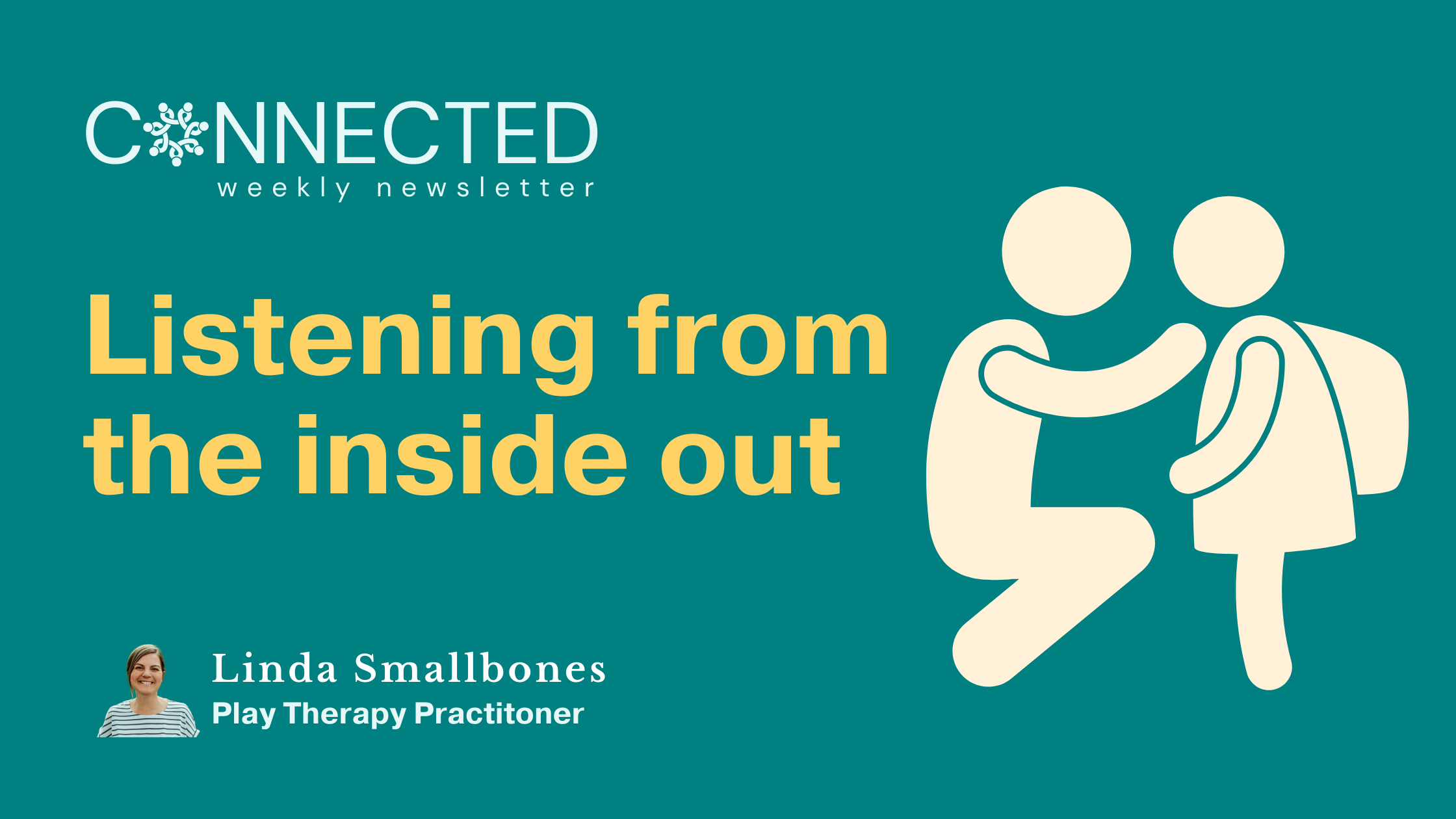Listening from the inside out
Listening can give us an insight and understanding into our children’s perspectives and behaviour. Listening is a way of communicating love and care.


Happy Valentine's Day! I am continuing the them of how we, and our children experience love through our senses. Last week we looked at Loving Touch. Today we're exploring listening.
As the adults in the parent-child relationship, we often assume we are right, and this can stop us from listening to our children. Listening, really listening, can give us an insight and understanding into our children’s perspectives and behaviour. Listening also helps us to develop mindsight.
Mindsight is the ability to perceive the internal experiences of another and make sense of that imagined experience, enabling us to offer a compassionate response to reflect our understanding and concern. (Siegel&Hartzell, Parenting from the inside out. 2003).
This helps us to move from being judging to being curious. From “What were you thinking??” to “I wonder what thought process got you to this place?”

If parents focus only on their children’s behaviour and do not consider the mental processes that motivate behaviour, they often end up parenting for short-term results and do not help children learn about themselves.
Siegel&Hartzell.
Ways we can listen
We don’t only listen to spoken words, we also “listen” to body language.
Listen to how your child is holding their body in different situations;
- When you notice them expressing a feeling, what do you see in their body?
- Do they appear constricted at times and more free at other times?
Children may find it hard to put some things into words, and inadvertently give you clues with their body language. Just notice. For example, a child I know chews on the top part of his shirt when he is feeling a little bit stressed, it’s an impulse to chew when feeling slight dysregulation. It’s a clue that co-regulation is needed.

We also listen to our own intuition in relation to our children. I have also called this “the bits between the words” in a previous post.
How listening helps
Listening does not mean you agree with everything your child says. Rather, listening is about building relationship.
When you listen to your child you communicate;
Their thoughts and feelings matter
A deep sense of belonging and validation
That you are trustworthy and you will listen to them and be there for them
Listen with the understanding that respects their individuality.
An attitude of love and patience, for our children and ourselves, permits dialogues that value and enhance each person’s individuality.
Siegel&Hartzell

Listen to build relationship, not to interrogate your child, or to catch them out on something inaccurate.
Listening is a foundational social skill. By listening to your child, really listening, you are modelling an important social skill. They will do what you do, not what you say.
Listening pace
I have written before about moving at “listening pace”. It is always, always worth the reminder to Slow. Things. Down. (I write to myself, too.)
How about you?
Did an adult listen to you when you were a child? If someone did, what difference did that make to your life? If no one did, how has that impacted you?